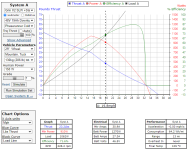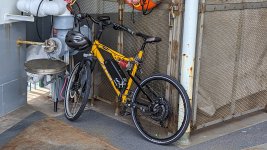taiwwa
10 W
It looks like this is a fairly new option. The ezee front geared hub motor with the clutch locked for regen capabilities.
So pros compared to other options from grin
—lower price
— lower weight. This thing looks like it is 3.8kg
—geared hub which gives you leverage advantage. Basically can go accelerate and decelerate faster.
Cons appear to be—
—geared hub has nylon gears which can wear out over time.
—smaller so cannot sustain extended heat dissipation
—no integrated torque arm splines like the all axle or GMAC so the torque arm setup is worse.
Lastly, while generally torque sensor bottom bracket setups are preferred, also cadence sensors allow for backpedal regen while torque sensing bottom bracket will not all for backpedal regen?
So pros compared to other options from grin
—lower price
— lower weight. This thing looks like it is 3.8kg
—geared hub which gives you leverage advantage. Basically can go accelerate and decelerate faster.
Cons appear to be—
—geared hub has nylon gears which can wear out over time.
—smaller so cannot sustain extended heat dissipation
—no integrated torque arm splines like the all axle or GMAC so the torque arm setup is worse.
Lastly, while generally torque sensor bottom bracket setups are preferred, also cadence sensors allow for backpedal regen while torque sensing bottom bracket will not all for backpedal regen?




